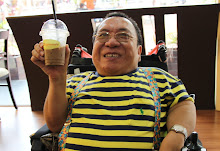Trauma and mindfulness
Freelance Writer
766 words
10 February 2008
Winnipeg Free Press
b7
English
All material copyright Winnipeg Free Press, a division of FP Canadian Newspapers Limited Partnership. All rights reserved.
Gerry Kopelow "In this fathom-long body, subject though it is to death and decay, I will show you the beginning and end of the universe." With these words the Buddha introduced "The Four Foundations of Mindfulness," a contemplative method for the investigation of reality that has flourished for some 3,000 years. Seekers rely on the Buddha's techniques to probe the spiritual world in the same way that physicists use electron microscopes to investigate the physical world.
Mindfulness is "non-judgmental awareness of the present moment." Trauma is "a serious injury or wound to the body and/or mind." To most people, the conjoining of these two conditions would be extremely unpleasant, something to avoid or repress.
Some months back I was hit by a car near Steinbach and suffered extreme damage to both lower legs. I was not at all clear if my legs could be saved, but several sessions of skilful surgery put me back together, and 14 weeks after the accident I walked out of the hospital on crutches, two months ahead of schedule, according to my doctors.
I attribute my rapid comeback to the compassionate care of an army of health-care professionals and to the involvement of family and friends, but also to a mental attitude that promoted healing. This attitude was sustained by maintaining "mindfulness," as best I could, from the moment I was struck down, right through all the surgeries and subsequent medical procedures.
If mindfulness is attention to the present moment, then logically there are only two alternate modes of experience: One is reflection on the past, and the other is speculation about the future.
Typically, reflection on the past is fraught with regret, especially if this reflection is triggered by physical injury. Thoughts of "if only" and "why me?" and the constant replay of the traumatic events are natural. Similarly, speculation about the future is often unpleasant: We fear a multitude of possible negative outcomes.
I am a teacher of Buddhist meditation and have been learning how to be "mindful" for 35 years. This work allows me a measure of control of my mental processes, and so I decided to "mindfully" compare the three experiential modes with a view to determining which felt better.
Clearly, lying in a hospital bed in pain and unable to move was, to say the least, unpleasant. But, due to the modern approach to pain management, I had access to narcotics that moderated the physical discomfort. I also had the company of a caring family and supportive friends, and I was the focus of intense medical attention as well. All this existed in the present.
If I allowed my mind to slip into reflection on the past, I relived the accident and the events that led up to it over and over. I experienced continuous grief -- metaphorically speaking -- the non-stop wringing of hands and the gnashing of teeth. These thoughts and feelings triggered a river of scary speculations: anxiety about future physical suffering, the possibility of infection and the loss of my legs, worry about work and money and my family's security, etc.
I quickly abandoned the experiment because the present moment, however difficult it might be, was less unpleasant than the multitude of griefs and anxieties my own mind was capable of generating.
How does all this facilitate healing? The answer lies in the nature of mind. We humans are born helpless. Our great evolutionary advantage is not strength or speed, but adaptability. We are creative entities. This creativity requires a sophisticated brain. Because a complex brain is a big consumer of energy, the fabrication of past and future alternate universes -- populated with life-like people, landscapes, buildings, even weather -- is a resource-intensive endeavour. Rather than engaging in fruitless imaginings, it is better to hold the mind in the present and free up its creative power for more productive activities. In the case of the trauma victim, the most obvious use for this energy is healing.
The body is the repository of four billion years of accumulated biological wisdom, all of which is dedicated to maintaining life as long as possible. Unburdened by the energy drain associated with worry, the body spontaneously sets to work repairing itself. So mindfulness is not just the least unpleasant way to experience trauma, but also the most efficient. And because healing is beautiful to witness, mindfulness practice increases joy at the same time as it diminishes anxiety.
Our fragility is sobering to contemplate, but the intelligence of the body is exhilarating to experience directly.
Subscribe to:
Post Comments (Atom)



No comments:
Post a Comment